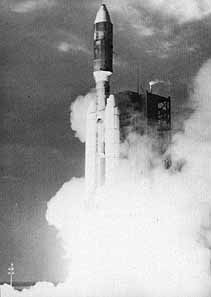|
Table 51
[whole page 328]
|
|
Major Training Tests for
Planetary Operations
|
|
|
- Test
|
- Date
|
- Purpose
|
|
|
- Uplink development exercise
(demonstration test 4)
|
- 2-15 Dec. 1975
|
- To design primary mission for,
Viking 1
for 12 days following
touchdown. Also to train for SAMPD and prepare for
demonstration tests.
|
- Science Analysis and Mission
Planning Directorate (SAMPD)
- test 1
|
- 8-12 Feb. 1976
|
- To evaluate site certification
process.
|
- Continuation of demonstration
test 4
|
- 22 Feb.-2 Mar. 1976
|
- Simulated events of Viking 1
mission from 52 hrs before separation to 8 days after
touchdown, to demonstrate capability to perform all
necessary sequences and respond to data
gathered.
|
- Demonstration test 5
|
- canceled
|
- Demonstration test 4 success
obviated test 5.
|
- Demonstration test 6
|
- 31 Mar.-4 Apr. 1976
|
- Simulated events on orbiter
from 24 hrs before Mars orbit insertion to 4 days
after insertion, to test downlink and uplink
ptocesses.
|
- Demonstration test 7
|
- 7-10 Apr. 1976
|
- Simulated lander and orbiter
operations from day 11, to test activities of active
science mission following first sampling of Mars's
soil.
|
- Demonstralion test 4R
|
- 18-22 Apr. 1976
|
- Detailed simulation of mission
from 30 hrs before separation to shortly after
touchdown, to retest sequences for separation, entry,
and landing.
|
- Training test 5
|
- 26-29 Apr. 1976
|
- To test landed sequence for
8th Mars day and separation activities, with
introduced anomalies.
|
- Training test 3
|
- 2-4 May 1976
|
- Simulation to test
preseparation and separation activities, with
introduced anomalies.
|
- Training test 4
|
- 10-11 May 1976
|
- To train for Mars orbit
insertion, with introduced anomalies.
|
- Operational readiness
test
|
- 2-3 June 1976
|
- Final dress rehearsal for MOI
of Viking
1.
|
















